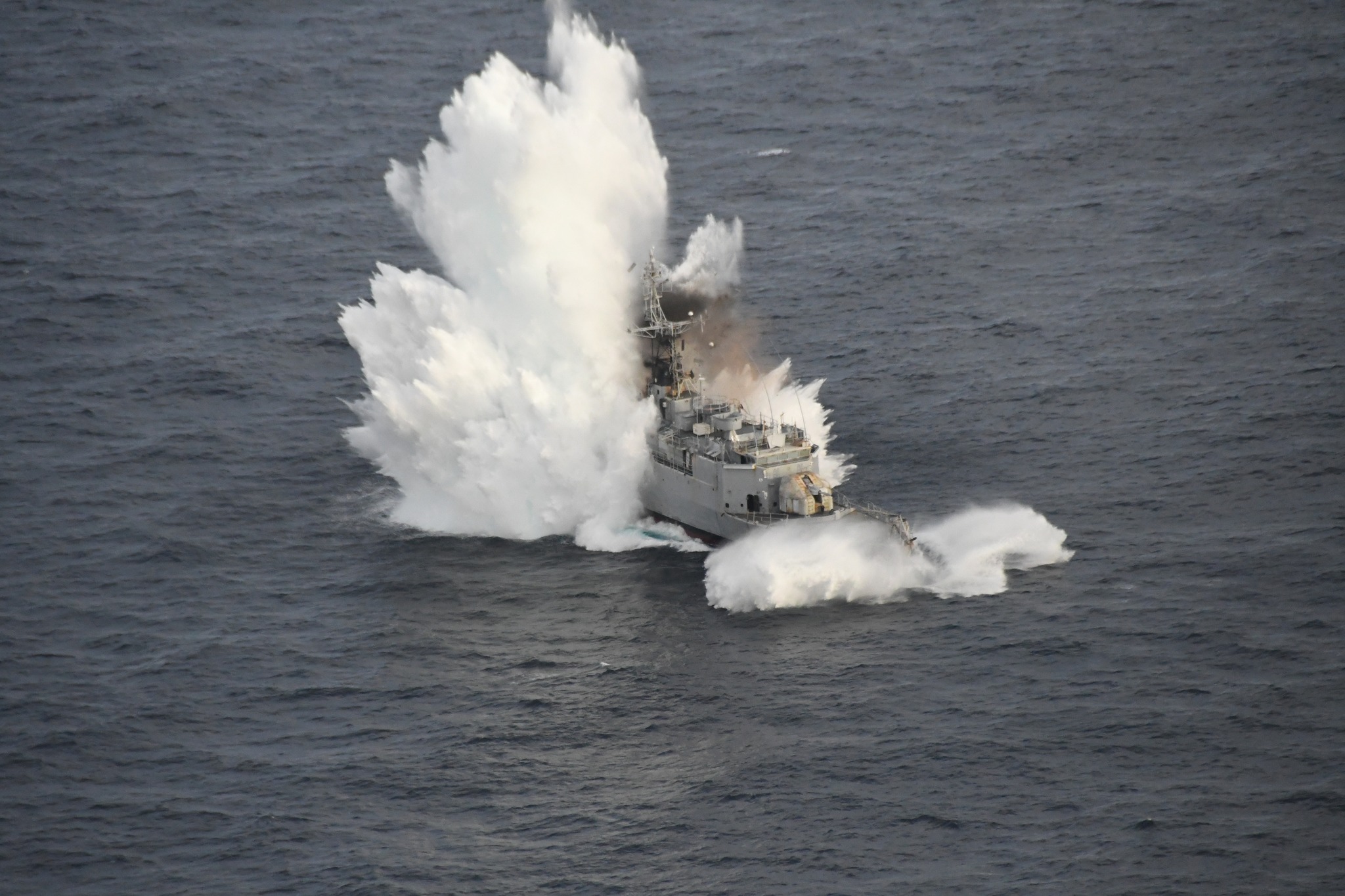On December 14, 2024, the French Navy conducted a live-fire test of its new F21 heavyweight torpedo, successfully sinking the decommissioned patrol vessel Premier-Maître L’Her in the Atlantic Ocean. The F21, developed as part of the “Future Torpille Lourde” (FTL) program by Naval Group in collaboration with Thales and Atlas Elektronik, represents the latest advancement in torpedo technology for the French Navy. The F21 torpedo is a formidable weapon, measuring 6 meters in length and weighing 1,300 kg. Its 533 mm caliber enables it to reach targets at ranges exceeding 50 km or sustain an hour of endurance, with speeds exceeding 50 knots. It can operate at depths between 15 and 600 meters, making it suitable for a variety of maritime environments. Designed to replace the older F17 torpedo, the F21 offers significant improvements in stealth and performance. Its twin counter-rotating multi-blade propellers greatly reduce its acoustic signature, allowing it to approach targets discreetly.
The F21 is powered by aluminum-silver oxide batteries, which can alternate between low power for stealth and high power for rapid attack during the final phase of engagement. One of the F21’s standout features is its advanced onboard computing system, which processes data in real-time using sophisticated algorithms. This allows the torpedo to operate autonomously and adapt to changing conditions, enhancing its effectiveness in complex environments like coastal waters. The torpedo is connected to the submarine by a fiber optic cable, allowing real-time communication between the submarine’s sensors and the torpedo’s digital suite. If the cable is severed, the F21 can continue its mission autonomously, ensuring operational flexibility.

The F21 is designed to engage both underwater and surface threats, making it a versatile tool for the French Navy’s submarine fleet. It is equipped with a 200 kg insensitive warhead and an all-electric proximity fuse, making it lethal against a wide range of targets. The torpedo’s adaptability to both deep blue-water and shallow brown-water environments further enhances its strategic value. The live-fire test demonstrated the F21’s operational effectiveness, as the torpedo successfully struck and split the decommissioned patrol vessel in half before sinking it. This test underscores the torpedo’s destructive power and its ability to address current and future naval threats in an increasingly uncertain global environment.
The French Navy plans to procure over 100 F21 torpedoes, with deliveries already underway. The F21 will be deployed on Rubis- and Suffren-class nuclear attack submarines as well as ballistic missile submarines. Additionally, the Brazilian Navy will also receive F21 torpedoes for its Scorpène-class submarines, as part of a technology transfer agreement with Naval Group. The first batch of F21s was delivered to the French Navy in 2019, and further deliveries continue as part of this major upgrade to French and allied naval capabilities. The successful test of the F21 is a significant milestone for the French Navy, marking a new era of advanced underwater warfare technology that ensures the fleet remains capable of addressing evolving maritime threats. The exercise, carried out by a nuclear-powered attack submarine (SSN), aimed to evaluate the performance of the F21 under near-realistic conditions.















